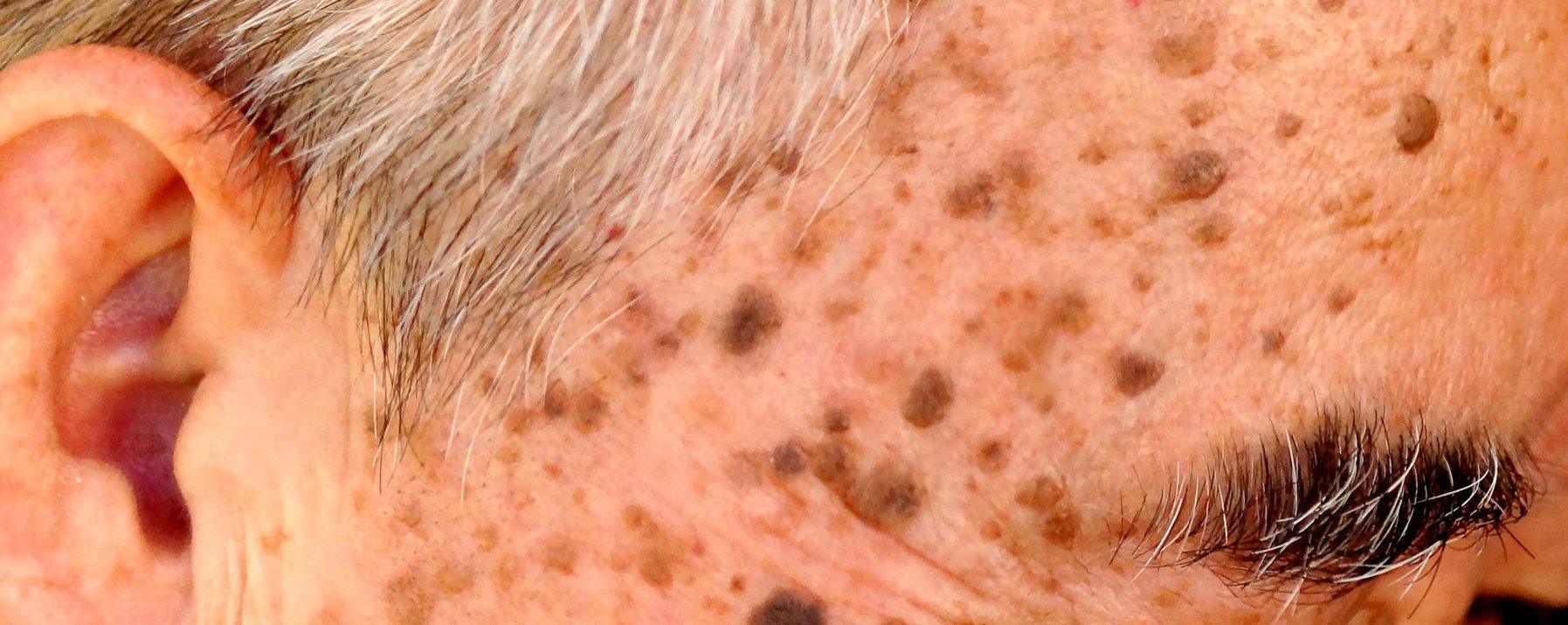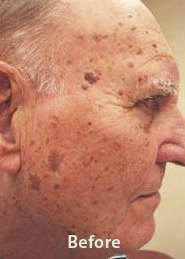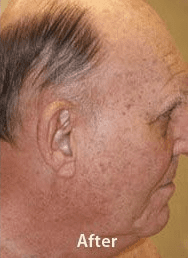
Benign Lesions
Once we have examined your skin and you have been reassured that your lesions are not worrisome, your dermatologist can provide you with options for removal of bothersome or unsightly lesions such as some moles, skin tags, seborrheic keratosis, sun spots and others. Though cosmetic removal of these lesions is generally not covered by insurance, most people are surprised to learn how affordable these procedures can be.
Are you seeing sunspots?
Sunspots, or age spots may appear as brown patches most noticeable on the face, hands or arms. Existing lesions may be treated with cryosurgery or chemical peeling agents. Various lasers have been used as well. Immediately after treatment the spot will appear more prominent, just before it peels off then fades away. In most cases this takes one to two weeks. Caution must be exercised in patients with darker skin tones, who are more likely to develop a dark spot at the treatment site. Wearing sunscreen daily will minimize the development of new lesions.


Other Types of Lesions
Skin tags are little extra pieces of skin that tend to develop in areas of friction such as under the arms, around the neck, under a woman’s breasts or in the folds of the legs. They can be quite bothersome, as they tend to catch on jewelry or rub on clothing. Removal of smaller tags may require no anesthesia, while larger ones may be numbed prior to removal. In most cases, all skin tags can be removed in one session. The cost may vary depending on the number of skin tags to be removed, but starts at $100. Even when all skin tags are successfully removed, you may continue to develop new tags. Many patients are seen every few years to have any new tags removed as they develop.
Seborrheic keratoses are inherited wart-like like growths that tend to increase in number with age. They may appear anywhere on the body including the trunk, arms, face and scalp. Their appearance can be quite varied, as they may appear white, pink, brown or gray. Some are warty while others are smooth and shiny. Regardless of their appearance, most consider them unsightly and some people are surprised to learn that they can easily be removed. A variety of methods may be used to remove seborrheic keratoses depending on type, size and location. Removal of existing lesions does not prevent development of new seborrheic keratoses. Also, these lesions may occasionally recur. For these reasons, touch-up sessions may be required. Insurance companies vary widely on their policies regarding treatment of seborrheic keratoses. We may ask you to sign a waiver for treatment stating that you will cover the cost if your insurance company deems the treatment to be cosmetic and/or not covered.